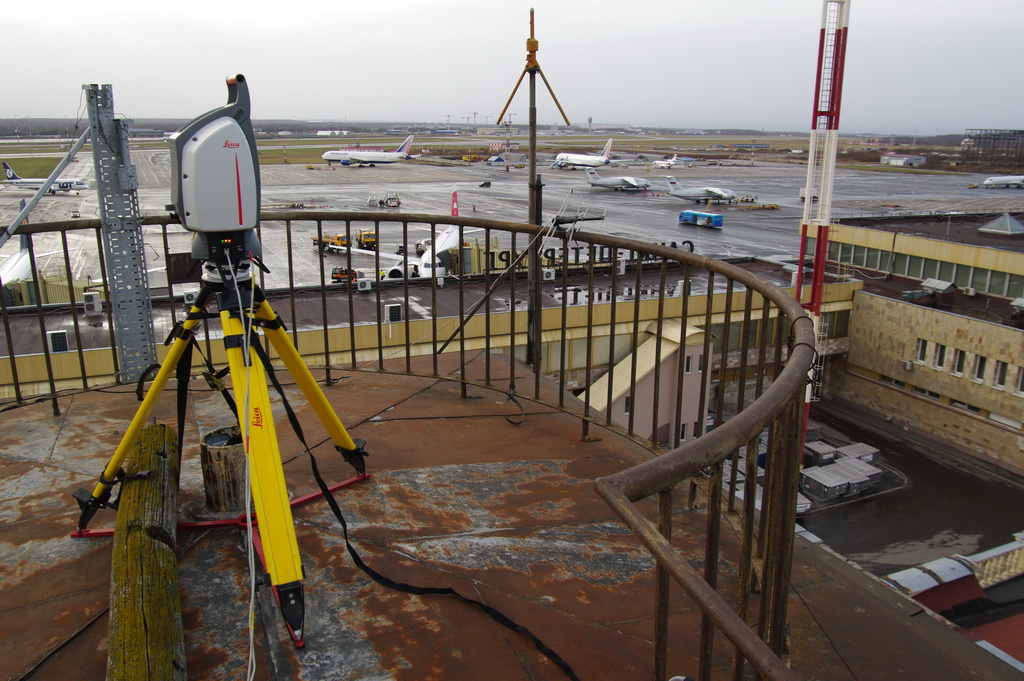
An architectural monument of Stalinist neoclassicism – the Shosseinaya airport terminal (the name of the airport until the seventies), built in 1951 to the project of architect A.I. Gegello. The interiors of the central hall and a number of rooms are finished with a lot of decor, ceilings with picturesque panels, bas-reliefs.
In connection with the start of a large-scale project to reconstruct St. Petersburg’s air gateway, the old airport terminal building is to be restored and repurposed for modern needs while preserving all historical elements of the facades and interior spaces. A typical task for 3D laser scanning is to obtain an array of data for the subsequent preparation of design documentation in a short time and with little funding. In December 2011, Trimetari specialists were entrusted with the architectural measurement of the monument by laser scanning.
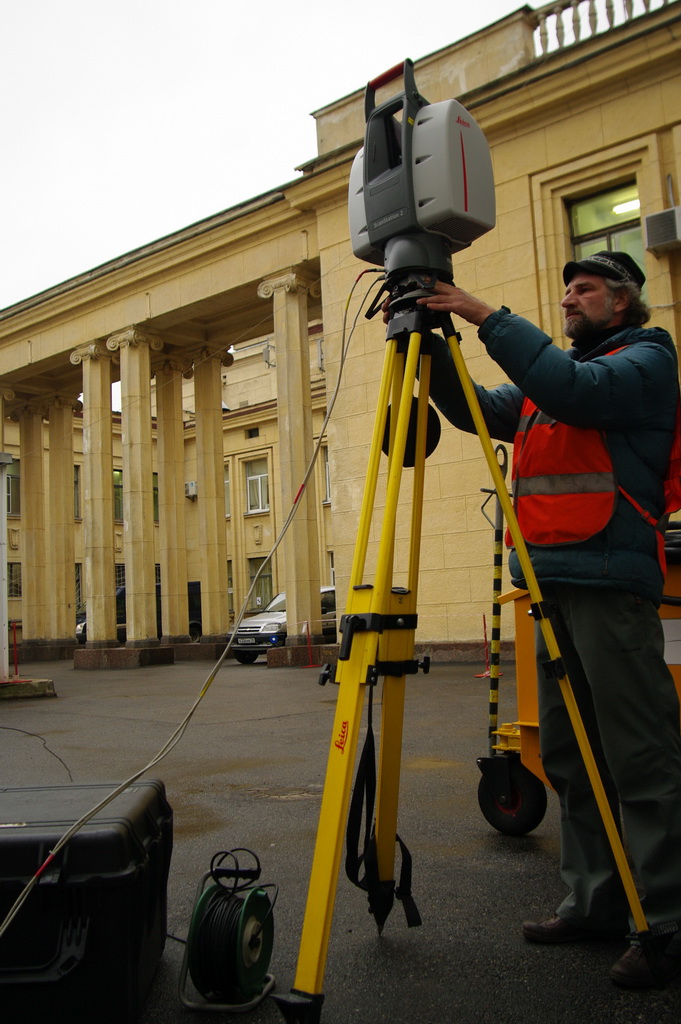
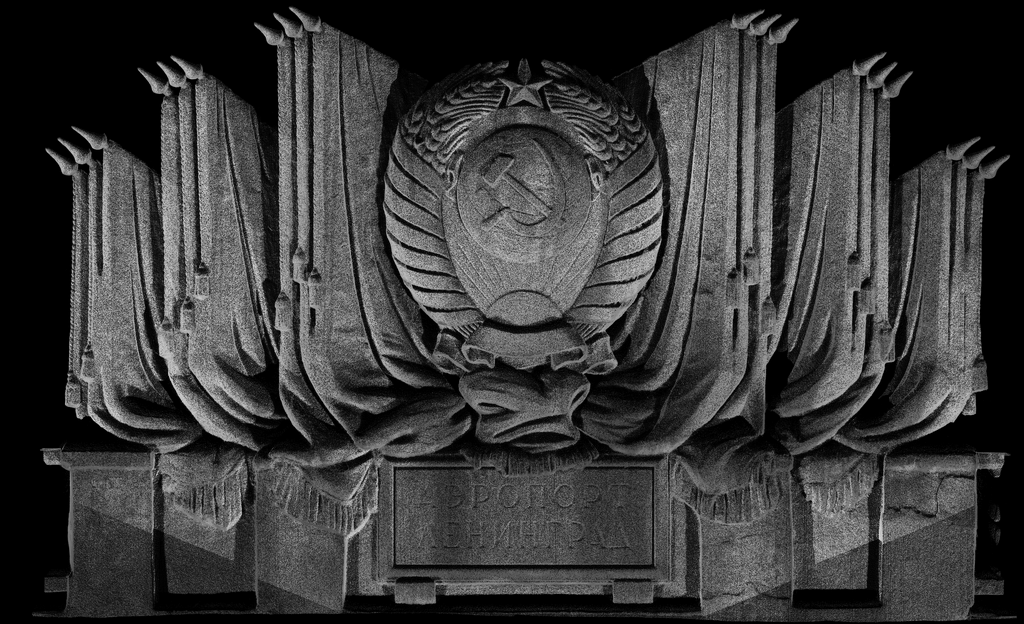 The field team then proceeds directly to laser scanning, during which the coordinates of the centres of the stamps are measured (already by the scanner) from each station. Subsequently, at the desktop processing stage, each stamp is assigned a coordinate value taken from the total station, which makes it possible to obtain the parameters of the affine transformation for each station if the number of stamps is sufficient. The transformation process is sufficiently automated, the user only has to pay attention to the quality control of stitching scans, calculate errors. In our case, the average value of the absolute error of station registration was 3 mm, which is typical for objects of similar size and configuration.
The field team then proceeds directly to laser scanning, during which the coordinates of the centres of the stamps are measured (already by the scanner) from each station. Subsequently, at the desktop processing stage, each stamp is assigned a coordinate value taken from the total station, which makes it possible to obtain the parameters of the affine transformation for each station if the number of stamps is sufficient. The transformation process is sufficiently automated, the user only has to pay attention to the quality control of stitching scans, calculate errors. In our case, the average value of the absolute error of station registration was 3 mm, which is typical for objects of similar size and configuration.
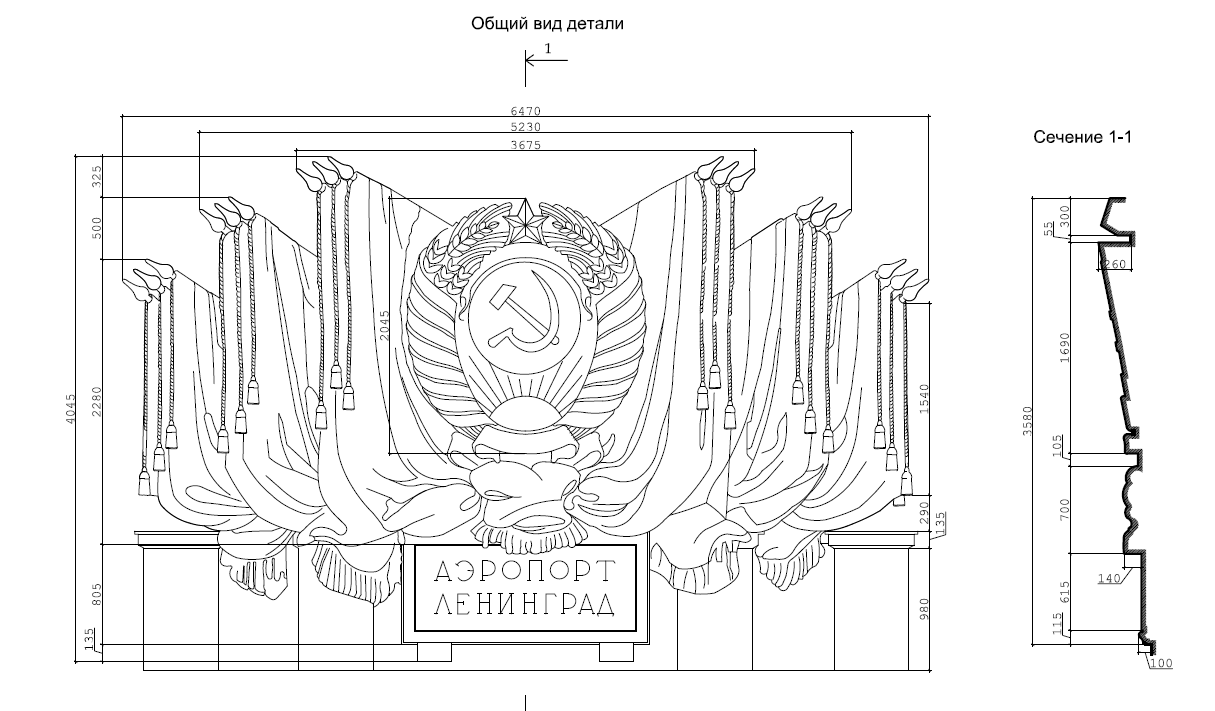
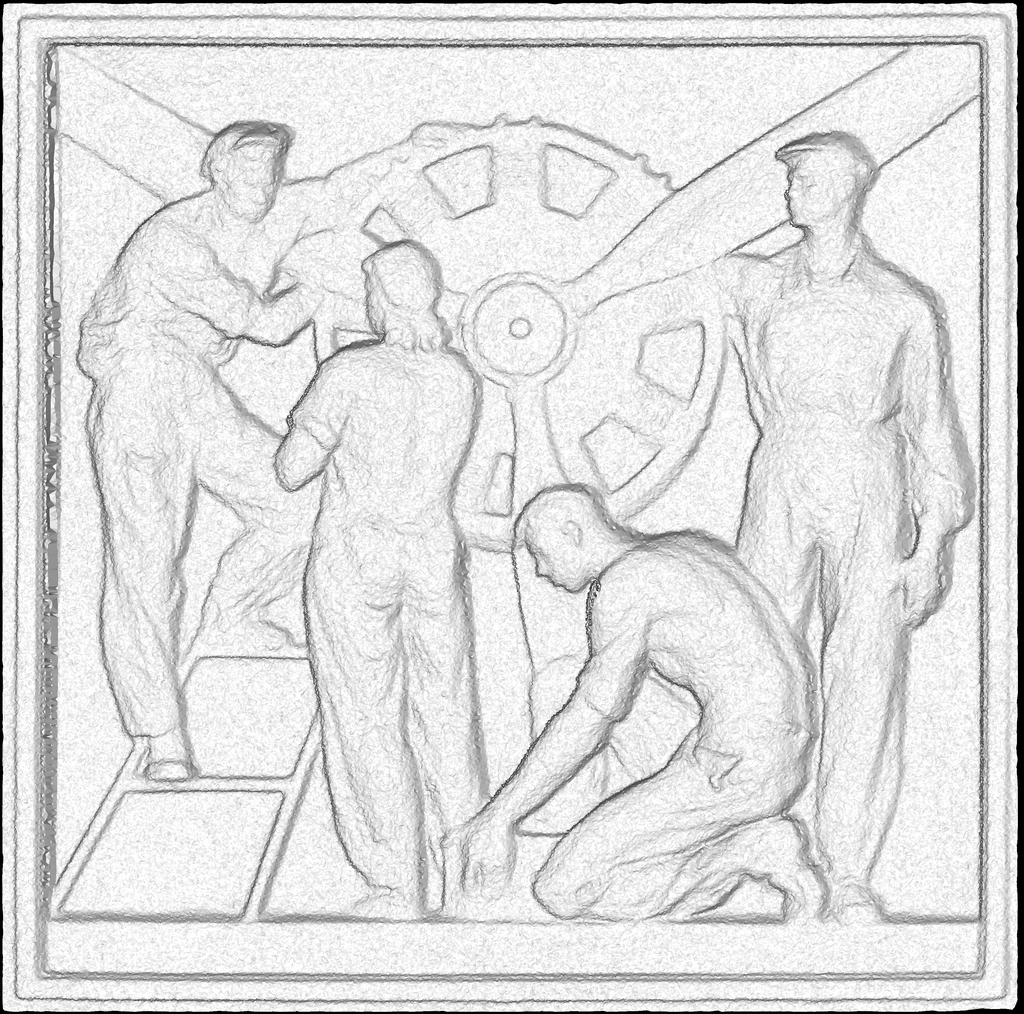 The peculiarity of the project is that the customer, who was the architectural and restoration workshop, received orthoimages rather than ready-made drawings, which he finalised himself. An undeniable advantage of this approach is the speed of delivery of materials and the relatively low cost of the work. In addition, architects have the opportunity to produce measurement drawings according to their own requirements. Therefore, the cameral stage was not long, the creation of orthoimages, unlike the drawing of finished drawings, requires a minimum of operator participation. As a result of the desktop phase, more than 360 orthoimages of facades, interiors, and details were created with a total volume of more than 20 GB.
The peculiarity of the project is that the customer, who was the architectural and restoration workshop, received orthoimages rather than ready-made drawings, which he finalised himself. An undeniable advantage of this approach is the speed of delivery of materials and the relatively low cost of the work. In addition, architects have the opportunity to produce measurement drawings according to their own requirements. Therefore, the cameral stage was not long, the creation of orthoimages, unlike the drawing of finished drawings, requires a minimum of operator participation. As a result of the desktop phase, more than 360 orthoimages of facades, interiors, and details were created with a total volume of more than 20 GB.
As a result of the architectural measurement of the airport terminal building, the customer promptly received accurate and detailed orthoimages, on the basis of which he independently created measurement documentation. The documentation is being approved by the Committee for State Control, Use and Protection of Historical and Cultural Monuments and is currently being used to design the reconstruction.

